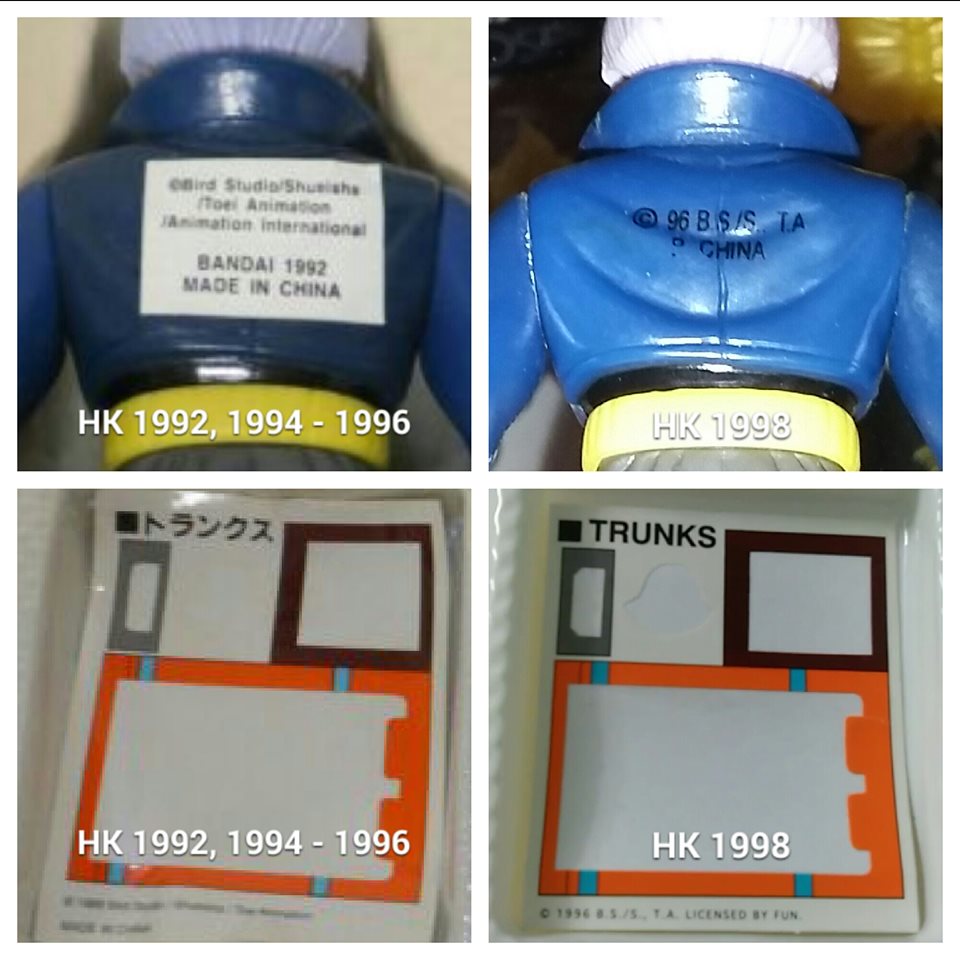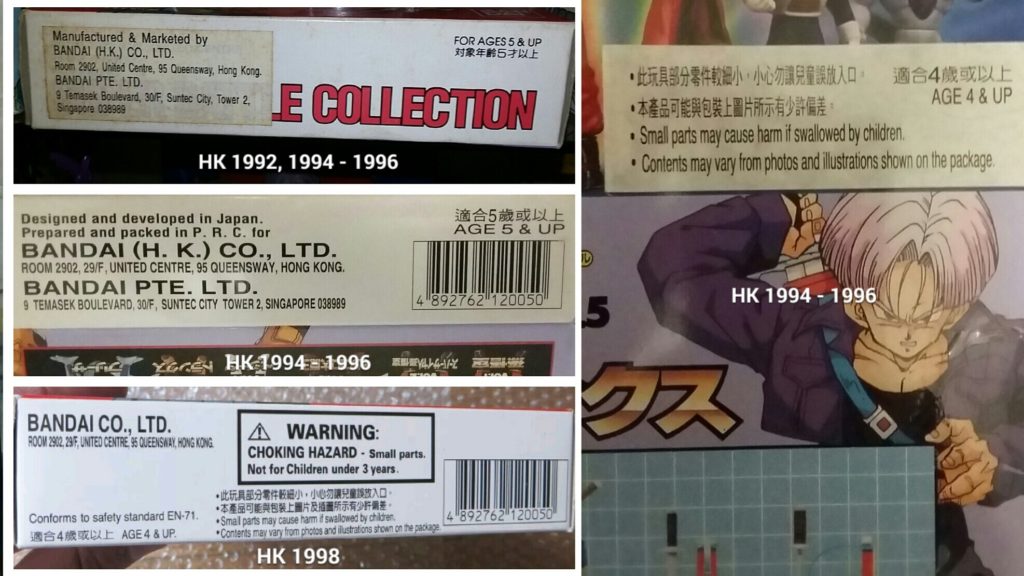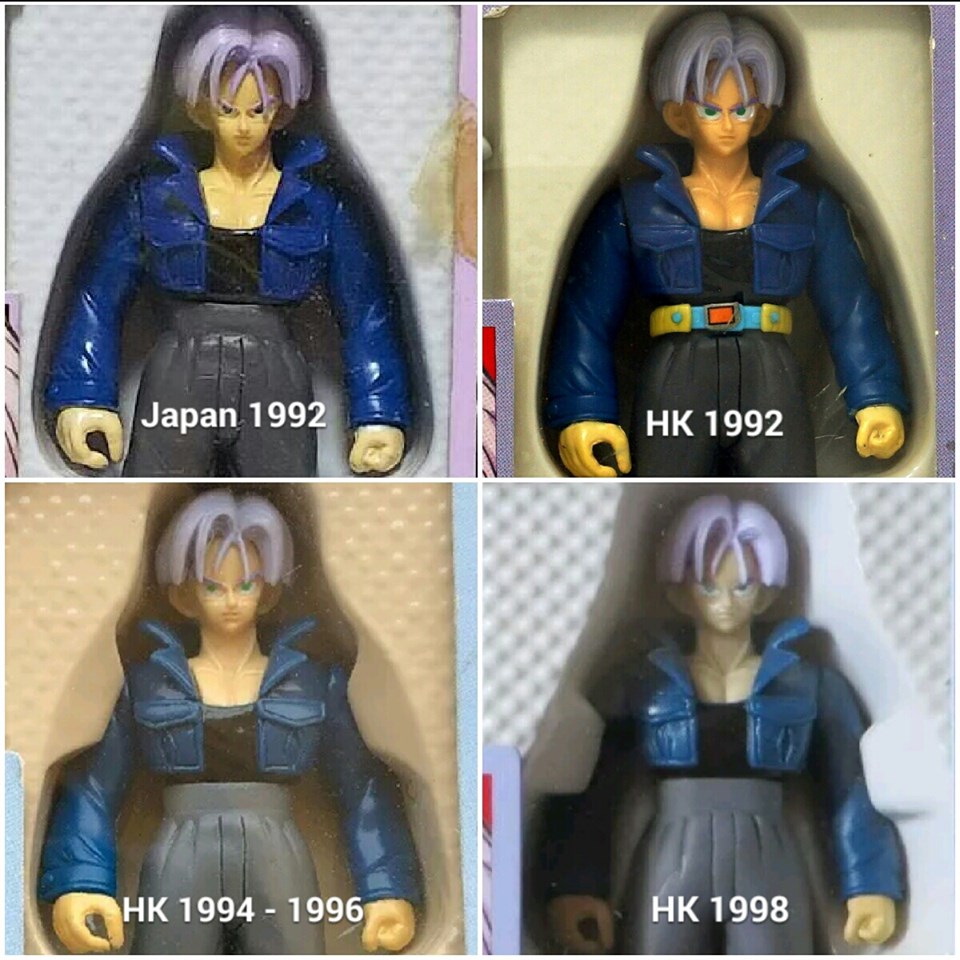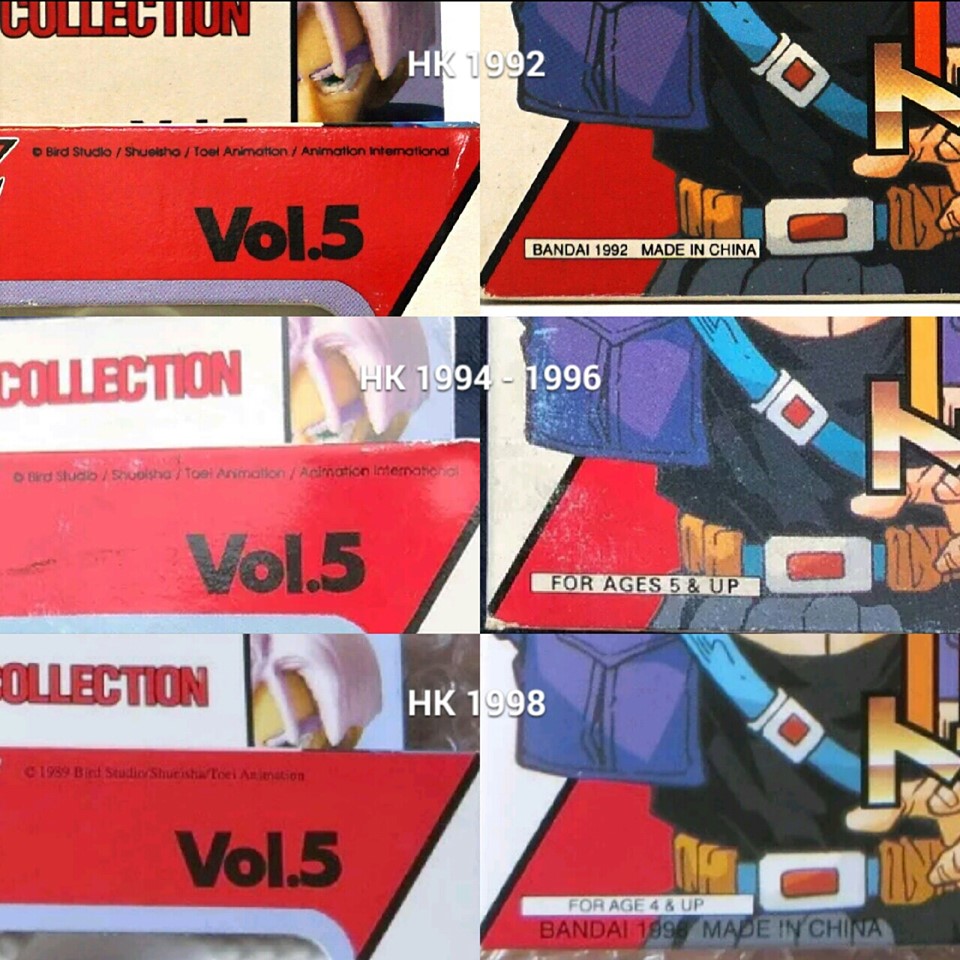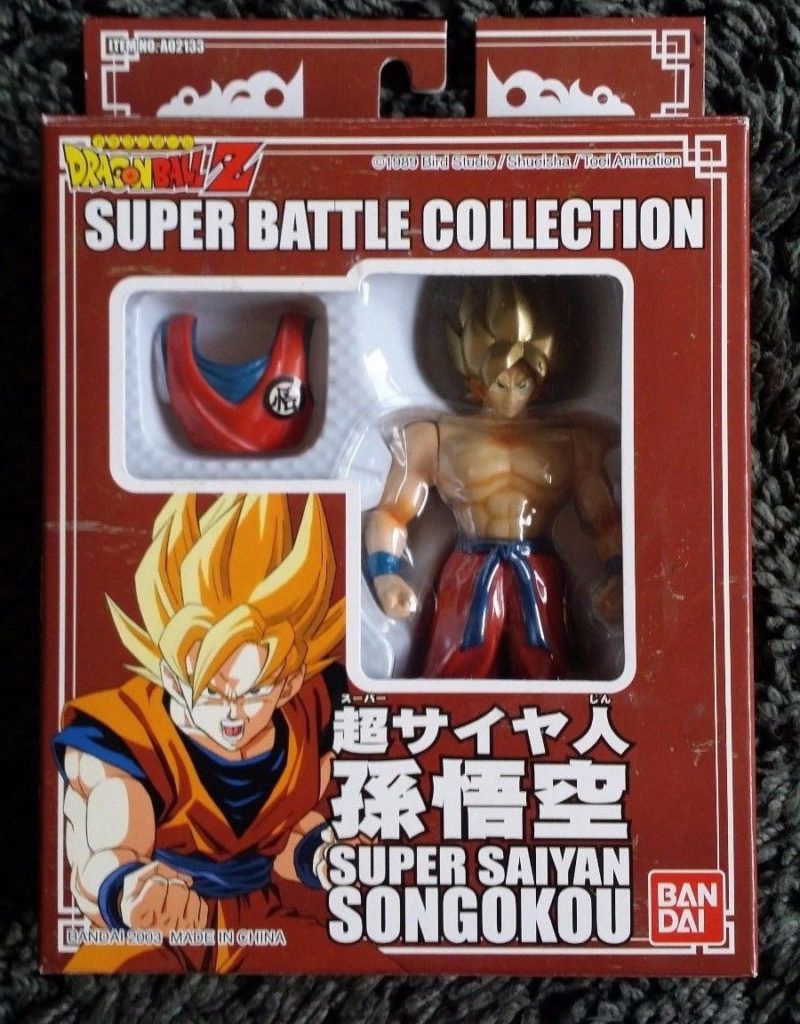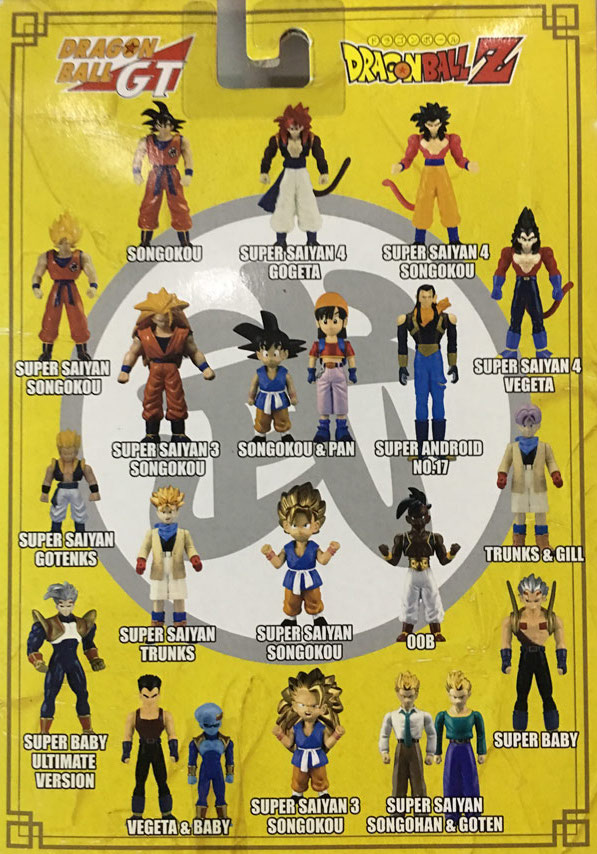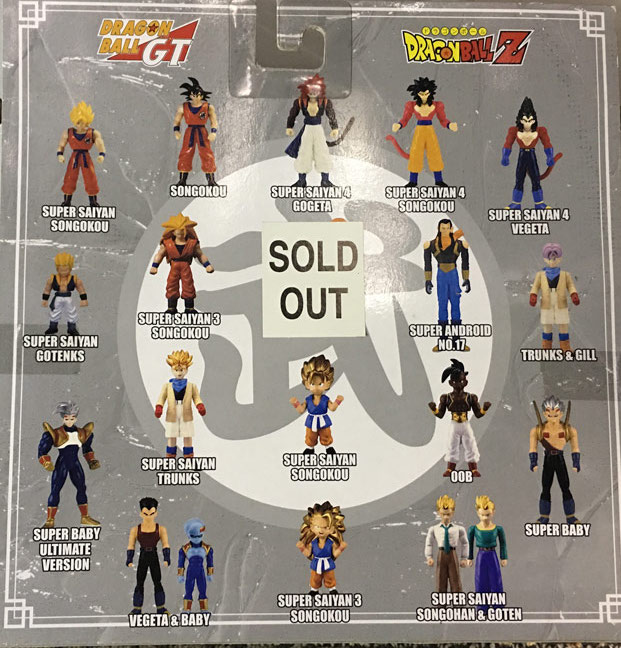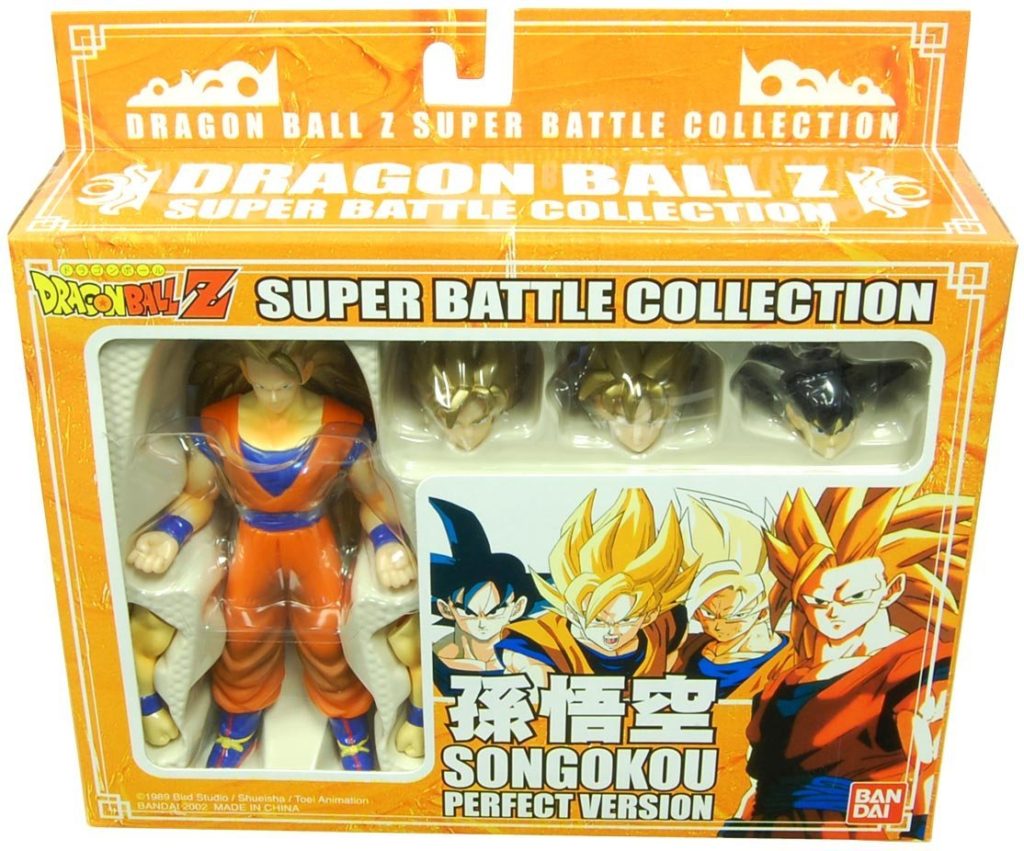Made in Japan 1992 Releases:
The first releases in the Super Battle Collection line by Bandai, are nicknamed the “Made in Japan 1992” versions. These versions are the easiest to spot, as the feature packaging that is unique from the Hong Kong releases and the re-painted versions that we saw releases in 2003.
As you might suspect, these releases earned their nickname due to the boxes bearing text in the lower left hand corner that says “BANDAI 1992 MADE IN JAPAN”:
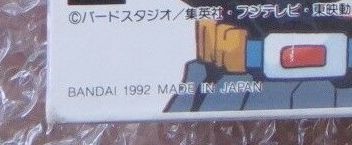
The differences between these versions and other releases do not end here. The Made in Japan 1992’s are the only figures in the Super Battle Collection to come bearing the “Toei sticker”. Additionally, the entire design of the packaging varies in a multitude of ways. One of the most major being what colors were used. As you can see below, the Made in Japan 1992 version does not utilize diagonal lines, but instead opts for lines that frame and outline the window of the packaging.
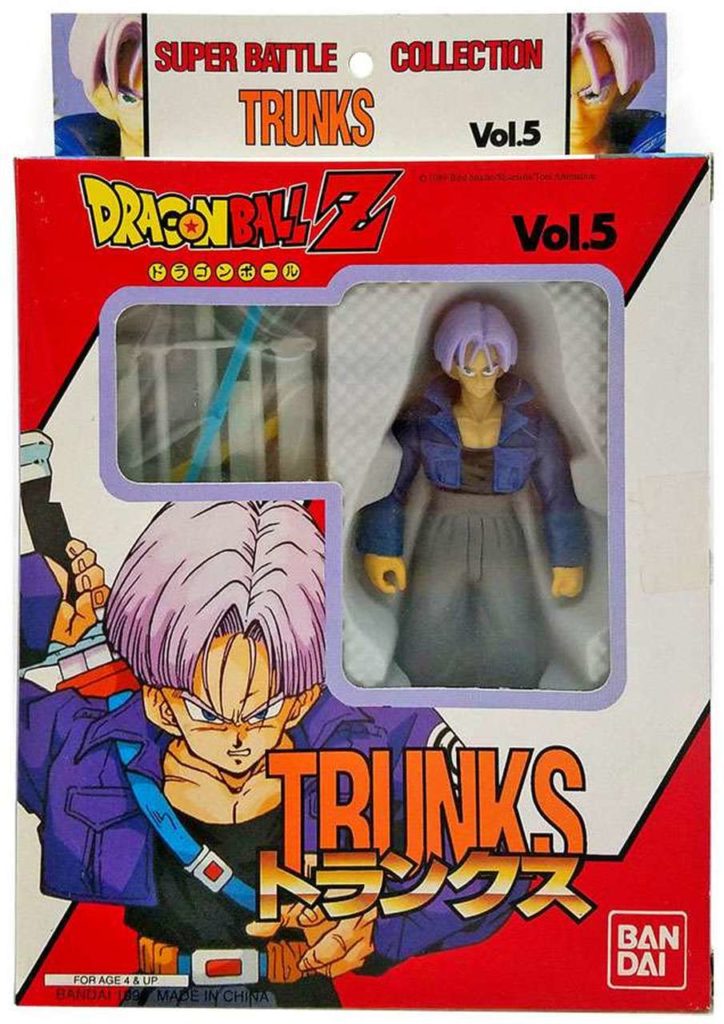
Made in China (HK) Release 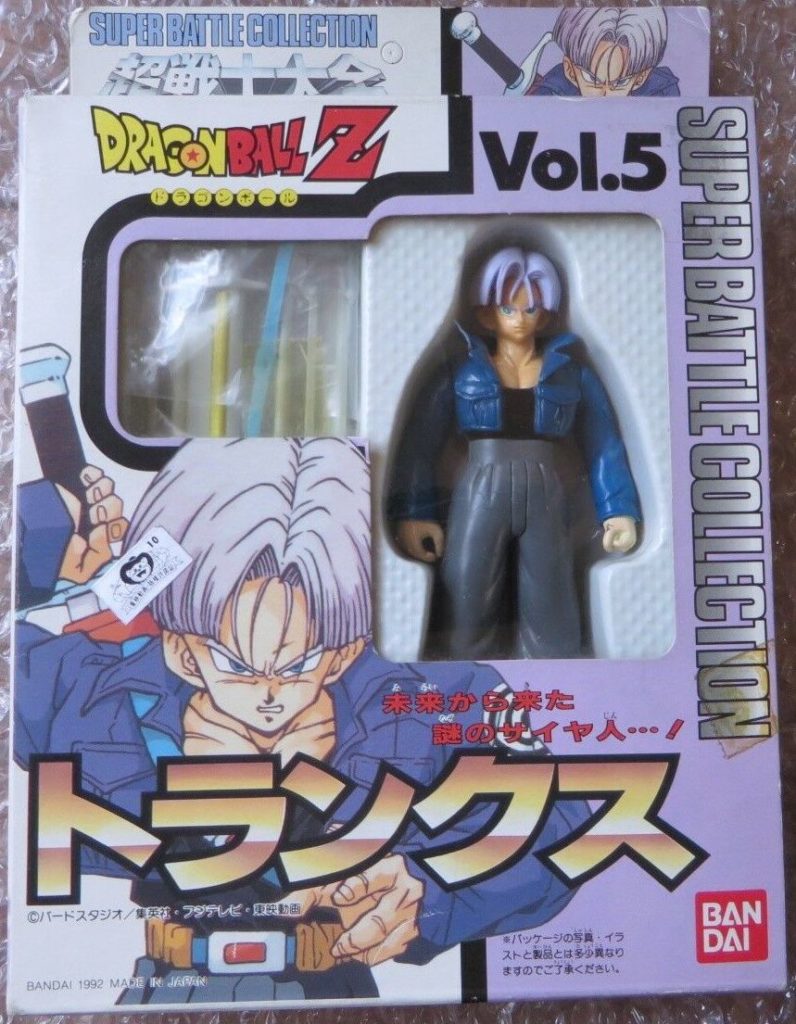
Made in Japan 1992 Release
You can also see that the two releases use very different color schemes and that some pieces of text are located in different places. Something else to understand about the 1992 Made in Japan releases is that the packaging used colors that were unique to each figure release, while the Hong Kong version’s utilized a more uniform style of packaging.
Consider the Vol. 3 Piccolo examples below and notice how the Made in Japan 1992 version utilizes the color green to compliment the figure, much like how the Trunks figure above utilized purple:
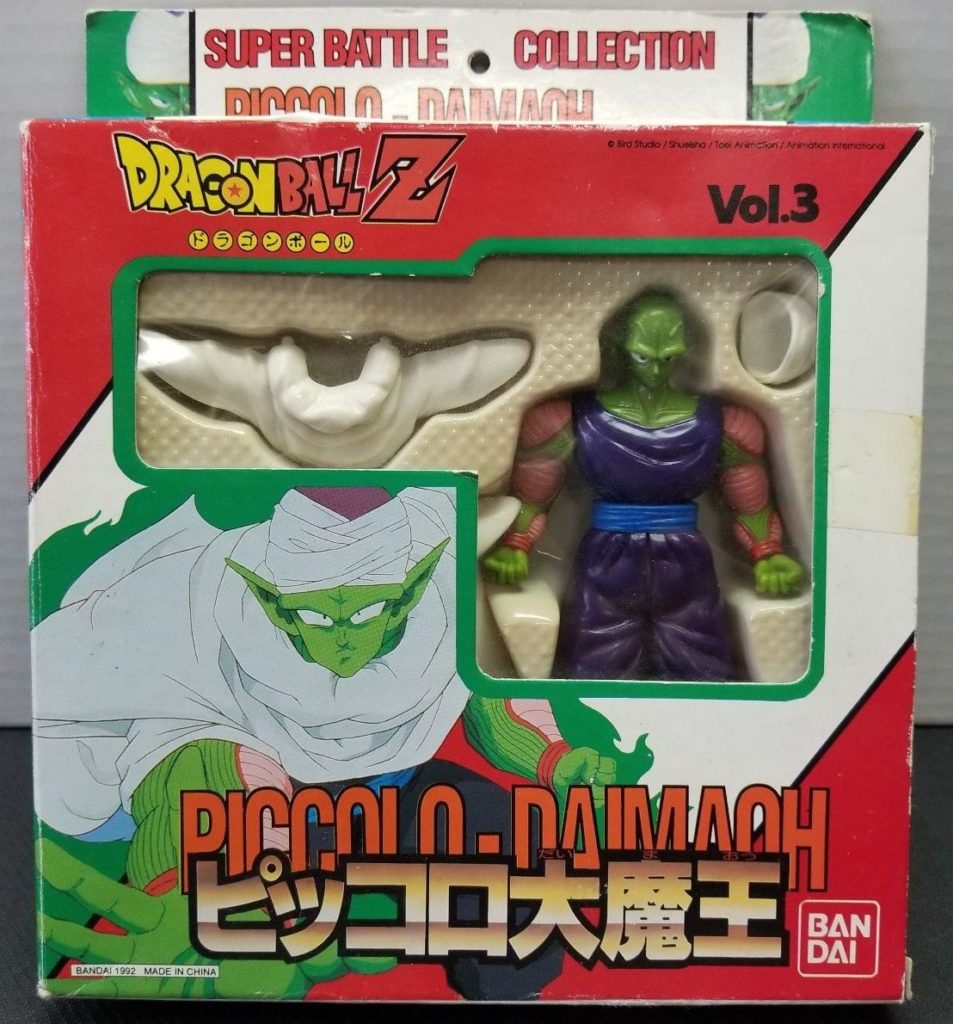
Made in China (HK) Release 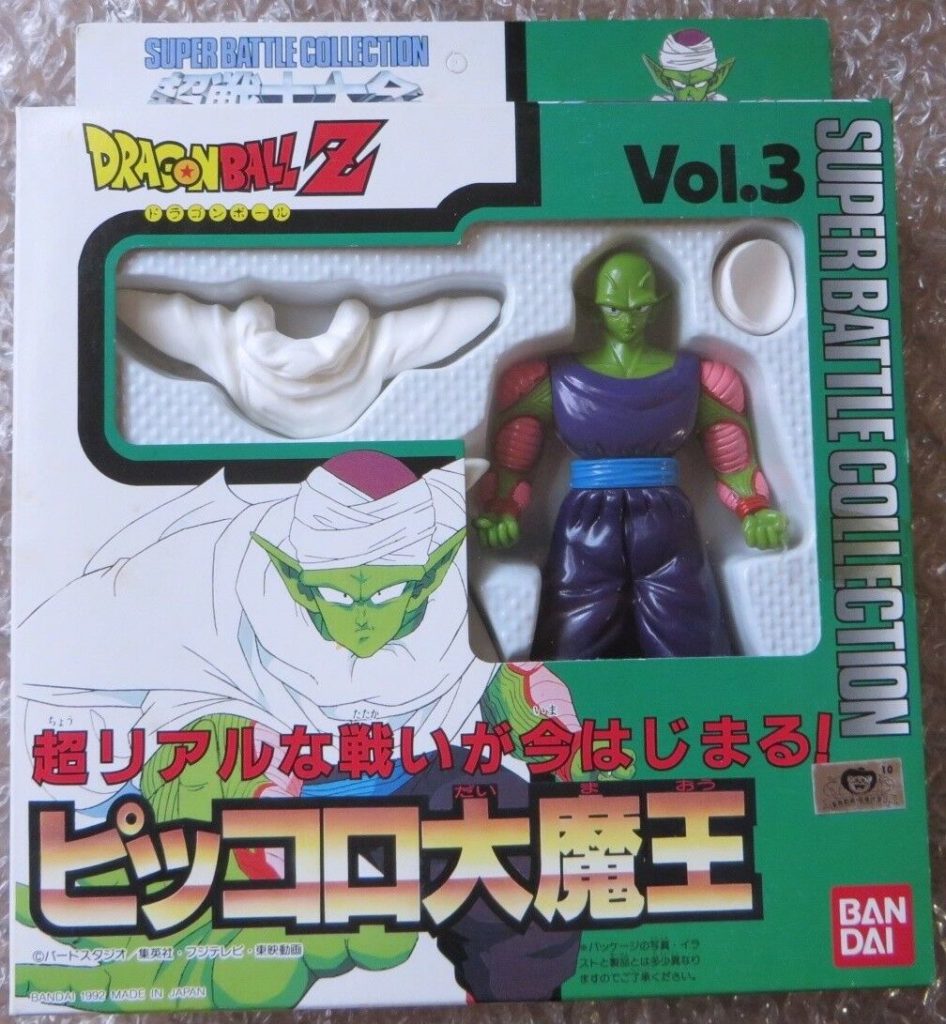
Made in Japan 1992 Release
Clearing Up Misconceptions:
While the Made in Japan 1992 versions are referred to as such, it should be noted and understood that these versions were produced from 1991 – 1993. While referring to these releases as the Made in Japan 1992s is an easy way to reference them, it is a misnomer.
The production dates for all ten original Made in Japan 1992 versions are as follows:
- Volumes 1 and 2: 1991
- Volumes 3 – 9 : 1992
- Volume 10: being the last in this initial release run was released in 1993.
More over, the serious collector should recognize that in the year 1992 production of these figures began moving from Japan to China, which ultimately led to the Hong Kong releases we will be discussing below. However, during this time, some releases that were made in China still looked exactly like the Made in Japan 1992 versions, included the unique packaging.
These mid-production versions are some what rare and only volumes 1 – 8 were produced with this style packaging in both Japan and China. See the example below of the Vol. 5 Piccolo:

Once the production finished moving completely to China, Bandai introduced an entirely new packaging design. Identifying these can be much more difficult and nuanced, as we explain next.
Hong Kong Releases:
Even though the HK releases kept a standard box artwork and design through the years, changes can be seen for the different production runs of the figures. This guide and these observations are intended to help you get the editions you desire or to know which edition you have.
Some notes, before we begin:
- The term “HK” refers to Hong Kong. Despite being manufactured in China, these were distributed by Bandai Hong Kong.
- We will use the dates of “1994 – 1996″ to describe the releases produced between the distinctly separate releases produced in 1992 and 1998. The figures for the 1998 releases have ” © 96. B.S/ S.. T.A. B. CHINA.” printed on the back.
The 1992 Hong Kong release is the closest to the original 1992 “Made in Japan” releases in terms of figure design and quality. In the case of Vol. 5 Trunks, the 1992 Hong Kong edition has the same stickers design as the 1992 Japanese edition and the blade of the sword is equally as sharp. The white plastic tray that holds the figure is the same design as the Japanese version. This can be identified easily, as the figure just rests in the tray without any support to prevent it from moving out of place.
For the 1994 – 1996 and 1998 release, the plastic tray has supports for the arms and legs to hold the figure in place. Additionally, the age limit for the figures was changed from “For Ages 5 & Up”, which was also the age limit for the Japanese release, to “For Ages 4 & Up”. In the case of Vol. 5 Trunks, this resulted in the modification of the sword from a sharp tip, to a rounded blade tip. Also the design, shape and color of the included stickers were changed from the original “Made in Japan 1992” design for the later releases with the biggest change being seen in the belt and strap.
The copyright information in the top corner remains the same for the HK 1992 and 1994 – 1996 releases. However, for the 1998 release it was changed from “© Bird Studio/ Shueisha / Toei Animation/ Animation International” to “© 1989 Bird Studio/ Shueisha / Toei Animation”.
On the bottom corner, for the Hong Kong 1992 editions the packaging says “BANDAI 1992 MADE IN CHINA”. For the 1994 – 1996 edition it was changed to “FOR AGES 5 & UP” (notice that an additional sticker was added afterwards to the back of the box specifying “AGE 4 & UP”). For the 1998 release, it reads “FOR AGES 4 & UP” and under that sentence reads “BANDAI 1998 MADE IN CHINA”.
For the figure, 1992 and 1994 – 1996 releases have the copyright info as a sticker glued to the back of the figure. This was changed for the 1998 release where the copyright info is printed on the back of the figure.
Changes in the skin color are present in the 1998 release when compared to the 1992 and 1994 – 1996. The skin color is more pale in the 1998 release.
Photo Gallery:
2003 Re-Painted Reissues:
The last production run in the Super Battle Collection occurred in 2003 when Bandai re-issued several select figures with all new packaging designs and new paint jobs that featured heavy shading. Additionally, they had done away with the volume numbering system we saw in all the previous releases.
You may also notice the copyright information, traditionally found in the lower left hand corner, says “BANDAI 2003 MADE IN CHINA”:
It’s also worth noting, when referencing the back of the packaging that a two pack for “Son Gokou and Pan” is advertised. This figure was never actually released. It’s not uncommon to find packaging with a “SOLD OUT” sticker applied over the space that used to be occupied by Son Gokou and Pan.
Juxtaposing the absence of the Son Gokou and Pan two-pack, is the presence within this line of the “Son Gokou (Perfect Version)”, which is not advertised on the rear of the packaging:
This guide was made possible thanks to Felipe Muñoz and his vast knowledge and contributions.

